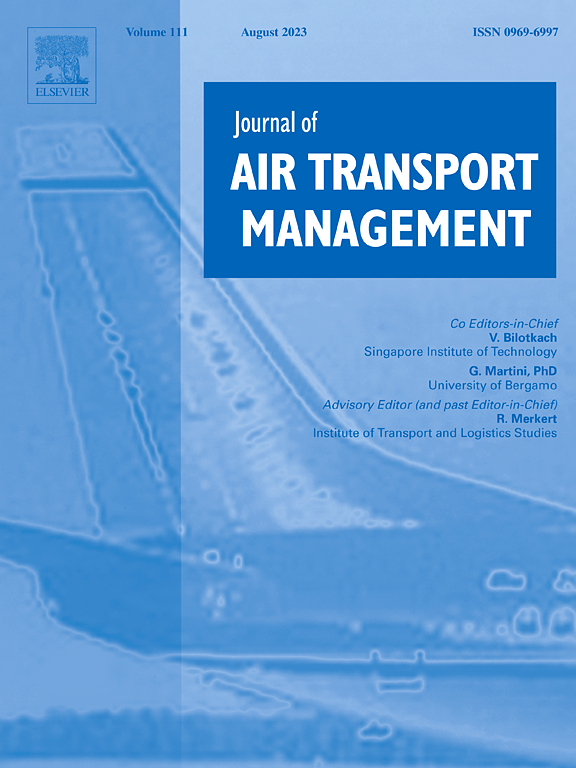由电动垂直起降飞机递送包裹?吸引力评估
IF 3.6
2区 工程技术
Q2 TRANSPORTATION
引用次数: 0
摘要
电动垂直起降飞机(eVTOLs)近年来受到越来越多的关注。然而,人们对使用evtol进行包裹递送的前景关注有限。为了填补这一空白,本文从成本、能源消耗和二氧化碳排放等方面探讨了基于evl的包裹递送的吸引力。考虑到电动交通工具不能在客户家门口起降,提出了一种双腿系统设计并制定了优化模型。为了实现该模型,我们考虑了多种可行的eVTOL和地面车辆类型、它们的成本经济性、能源使用和二氧化碳排放特性。将该模型应用于芝加哥都会区,我们发现基于eVTOL的包裹递送的吸引力主要取决于eVTOL和地面车辆类型。通过适当的evtol和地面车辆组合,与纯货车运输相比,基于evtol的运输在总运输成本方面可能更具吸引力,但从能源和排放的角度来看并不一定如此。这突出了未来研发的需求,以进一步提高evtol的能源效率。在设计基于eVTOL的包裹递送系统时,还应认识到考虑eVTOL交通和商业空中交通之间潜在相互作用的重要性。本文章由计算机程序翻译,如有差异,请以英文原文为准。
Package delivery by electric vertical takeoff and landing aircraft? An attractiveness assessment
Electric vertical takeoff and landing aircraft (eVTOLs) are gaining growing interest recently. However, limited attention has been paid to the prospect of using eVTOLs for package delivery. To fill this void, this paper explores the attractiveness of eVTOL-based package delivery in terms of cost, energy consumption, and CO emissions. Given that eVTOLs cannot take off/land at customer doorsteps, a two-leg system design is proposed and formulated as an optimization model. To implement the model, we consider multiple plausible eVTOL and ground vehicle types, their cost economics, and energy use and CO emission characteristics. Applying the model in the Chicago metro region, we find that the attractiveness of eVTOL-based package delivery depends critically on the eVTOL and ground vehicle types. With an appropriate eVTOL-ground vehicle combination, eVTOL-based delivery can be attractive compared to van-only delivery in terms of total shipping cost, but not necessarily so from the energy and emission perspectives. This highlights the need for future R&D to further enhance the energy efficiency of eVTOLs. When designing eVTOL-based package delivery systems, the importance to account for the potential interactions between eVTOL traffic and commercial air traffic should also be recognized.
求助全文
通过发布文献求助,成功后即可免费获取论文全文。
去求助
来源期刊

Journal of Air Transport Management
TRANSPORTATION-
CiteScore
12.40
自引率
11.70%
发文量
97
期刊介绍:
The Journal of Air Transport Management (JATM) sets out to address, through high quality research articles and authoritative commentary, the major economic, management and policy issues facing the air transport industry today. It offers practitioners and academics an international and dynamic forum for analysis and discussion of these issues, linking research and practice and stimulating interaction between the two. The refereed papers in the journal cover all the major sectors of the industry (airlines, airports, air traffic management) as well as related areas such as tourism management and logistics. Papers are blind reviewed, normally by two referees, chosen for their specialist knowledge. The journal provides independent, original and rigorous analysis in the areas of: • Policy, regulation and law • Strategy • Operations • Marketing • Economics and finance • Sustainability
 求助内容:
求助内容: 应助结果提醒方式:
应助结果提醒方式:


